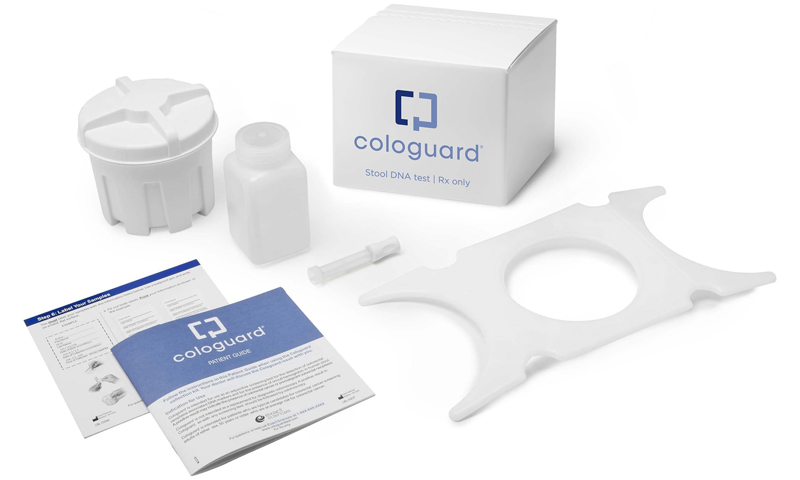At-home colorectal screening: A convenient, noninvasive option
MDlinx Sep 21, 2022
In the wake of COVID-19, many older adult patients had to forgo regular doctor visits to reduce their risk of contracting the coronavirus and preserve non-emergency resources.

With the resulting reduction of in-office colonoscopies, some patients have relied on at-home, stool-based tests to screen for colon cancer, according to JAMA.
Jaklevic MC. Pandemic spotlights in-home colon cancer screening tests. JAMA. 2021;325(2):116–118.
Physicians may prescribe them for patients who exhibit unexplained low blood counts, weight loss, or bloody stools.
At-home testing vs colonoscopy
Colorectal cancer is the second-leading cause of US cancer deaths, according to an article published by Gastroenterology & Hepatology.
Ahlquist DA. Stool-based tests vs screening colonoscopy for the detection of colorectal cancer. Gastroenterology & Hepatology. 2019;15(8):437–440.
Screening for it is a crucial preventive measure adults can take to lower their risk of developing it.
The Gastroenterology & Hepatology article compared at-home tests from Cologuard with getting a colonoscopy. Colonoscopies are considered the gold standard screening method for colorectal cancers. Endoscopists can inspect a patient’s entire colorectal surface, as well as locate, biopsy, and remove potentially harmful lesions during the procedure. Colonoscopies are exceptionally sensitive in detecting colon cancer and polyps.
Colonoscopy patient compliance rates are between 38% and 42%. This may be due to patients usually having to miss 2 days of work to undergo the procedure, posing financial and logistical challenges to some people. Also, colonoscopies are invasive—which may be another reason why patients are turning to at-home tests.
Currently available at-home tests have varying degrees of efficacy, according to Gastroenterology & Hepatology. They all require stool samples from patients, and they all maintain different levels of sensitivity. These noninvasive tests save patients from taking time off work and are covered by most private insurance companies as well as Medicare.
The average compliance rate of patients who took the first couple million at-home tests was 70%—a significant leap from that of colonoscopies. But some patients dislike that this method requires annual testing. Also, some at-home tests fall significantly short of colonoscopies’ 70%–75% sensitivity rate to cancer.
Patients at average risk may therefore benefit the most from at-home tests. Once blood is detected in the stool, however, a colonoscopy is recommended for further analysis.
3 types of at-home tests
If you feel an at-home test would be productive for your patients, there are a few options to consider.
According to an article published by the Cleveland Clinic, there are three types of tests patients can perform at home:
Should you use an at-home test for colon cancer screening? Cleveland Clinic. March 2, 2022.
-
Fecal occult blood test (FOBT): A FOBT can determine whether there is blood in a patient’s stool through the use of a substance known as guaiac. FOBTs do not test for serious, more specific complications beyond blood in the stool. Patients using them must adhere to certain dietary restrictions, such as not eating red meat or taking nonsteroidal anti-inflammatories for a few days before the test.
-
Fecal immunochemical test (FIT):—The FIT also detects the presence of blood in a patient’s stool, this time using antibodies—and it doesn’t require patients to change their diet. Whether a patient experiences bleeding due to a harsh bout of diarrhea or a tumor, the FIT can confirm if your patient’s stool contains blood.
-
Fecal DNA tests: These are newer tests that can identify abnormal DNA in a patient’s cells. Cancer cells in the colon will inevitably pass through a patient’s stool, making these tests a helpful tool for detecting potentially cancerous activity. The ability of the fecal DNA tests to potentially pick up on cancer is what sets it apart from the other two. However, they are not visual—meaning you can’t use them to detect pre-cancerous polyps.
In addition to patients exhibiting warning signs of colorectal cancer, at-home tests could be a safe, effective screening option for those who may not tolerate anesthesia for a colonoscopy, according to the Cleveland Clinic.
Ultimately, screening at home can provide you with a better understanding of your patient’s risk without the invasiveness of a colonoscopy—changing the game for good.
What this means for you
In the COVID-19 pandemic era, more patients have moved away from regular colonoscopies toward at-home, stool-based colorectal tests. There are three types of at-home tests patients can use: FOBT, FIT, and fecal DNA tests. As long as your patients are committed to following the tests’ guidelines, they should get accurate results. To save patients a trip (and the invasiveness of a colonoscopy), you may prescribe at-home colorectal tests for patients who have blood in their stools, unexplained low blood counts, or noticeable weight loss, as well as those who want to avoid a colonoscopy’s anesthesia or invasiveness.
-
Exclusive Write-ups & Webinars by KOLs
-
Daily Quiz by specialty
-
Paid Market Research Surveys
-
Case discussions, News & Journals' summaries